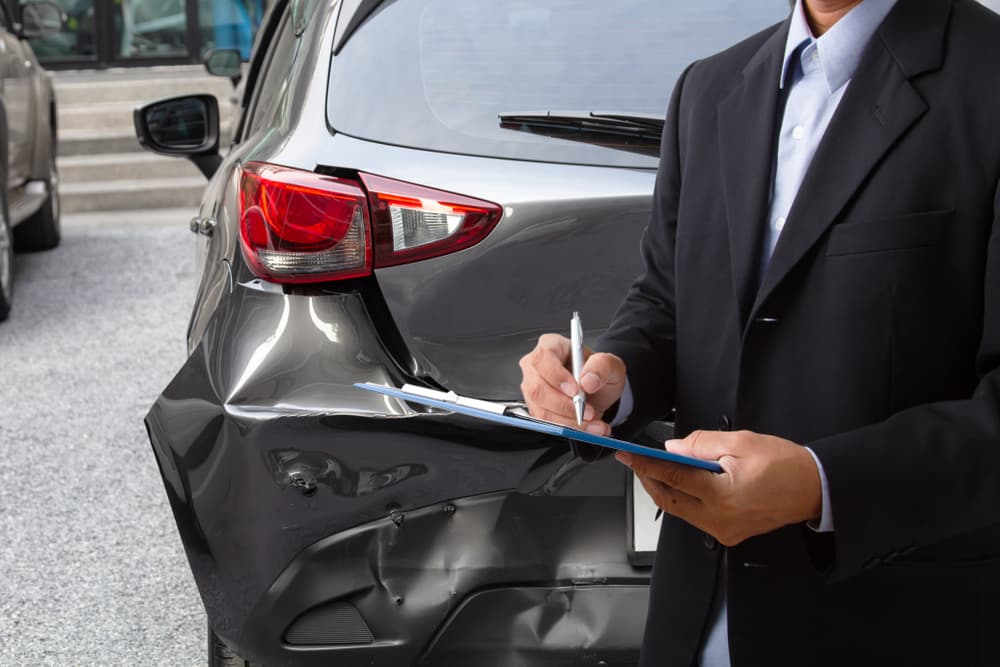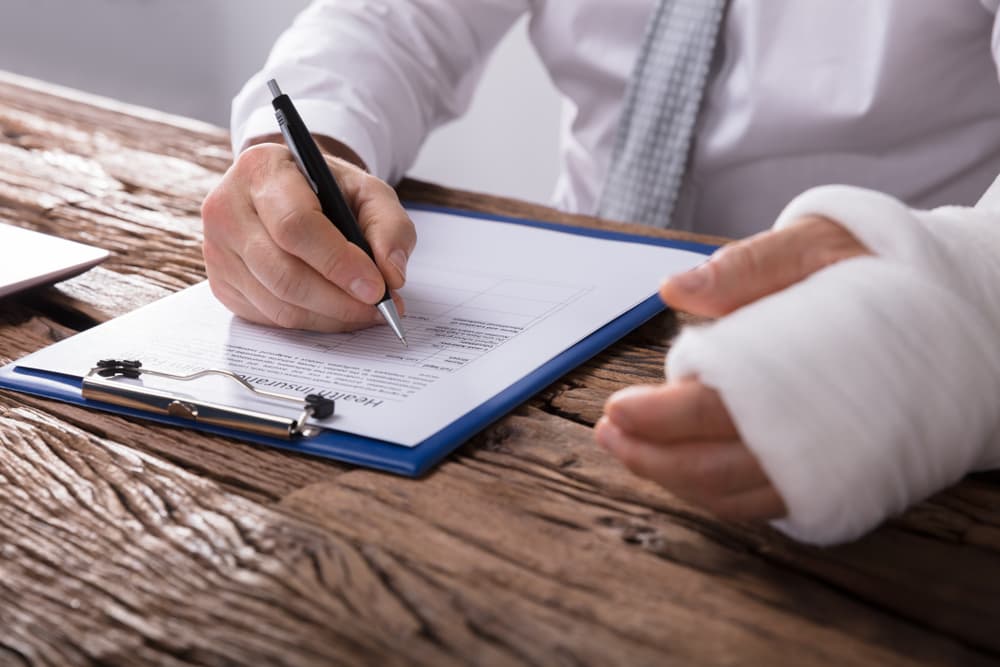
T-bone accidents, also known as side-impact collisions, are among the most dangerous and common types of car wrecks. They occur when one vehicle strikes the side of another, forming a T-shape. If you suffered an injury in a T-bone accident in Minnetonka, you're probably wondering who you can hold liable.
Determining fault in these accidents can require careful analysis. An attorney can investigate why the accident occurred and then pursue compensation from the at-fault driver.
Here's some information on why T-bone accidents happen and how a skilled Minnetonka car accident lawyer can determine fault, and pursue the compensation you deserve.
Causes of T-Bone Accidents
According to the Insurance Institute for Highway Safety (IIHS), T-bone accidents accounted for 22 percent (9,446) of the 42,939 auto accident deaths in the U.S. in a recent year.
T-bone accidents can happen due to:
- Failure to yield: One of the most common causes of T-bone accidents is the failure of a driver to yield at intersections, stop signs, or traffic lights. When a driver fails to yield the right of way, they may collide with another vehicle traveling through the intersection.
- Distracted driving: Distractions such as texting, talking on the phone, eating, or adjusting the radio can divert a driver's attention from the road, increasing the risk of side-impact collisions. Sometimes, drivers look up too late to notice another car crossing directly in their path.
- Speeding: Speeding reduces the driver's ability to react to sudden changes in traffic conditions, making it more likely a T-bone accident will occur. Even if a driver believes they have the right-of-way, they might not stop in time to avoid a collision if they are speeding.
- Running red lights or stop signs: This is a highly dangerous action by drivers, and a leading cause of T-bone collisions. When one driver ignores a signal or sign to stop, they can collide into the side of a vehicle with the right-of-way traveling the other direction through the intersection.
- Impaired driving: Driving under the influence of alcohol or drugs affects not only coordination and reaction time, but also judgment. All of these impairments can lead to collisions, including T-bones.
- Poor weather conditions: Rain, snow, or fog can reduce visibility and traction, making it difficult for drivers to stop or maneuver. When drivers fail to slow down and use proper caution in adverse conditions, they increase the risk of crashing.
Other drivers are usually at fault for T-bone accidents. Other factors might contribute to these collisions, but they are rare, and most victims will face other drivers as liable parties.
Proving Fault in T-Bone Accidents
You might be sure you weren't to blame for the accident. But you'll need proof to get the compensation to which you are entitled. A skilled lawyer can investigate who is at fault for a T-bone accident in Minnetonka. These are just a few of the steps your attorney will take.
Gathering Evidence
The first step involves collecting evidence from the accident scene, including photographs, witness statements, police reports, and surveillance footage, if available. This evidence helps reconstruct the events leading to the collision.
Analyzing Traffic Laws
Attorneys review relevant traffic laws to assess whether any violations contributed to the accident. For example, if one driver ran a red light or failed to yield, they may be deemed at fault for the collision.
Consulting Experts
Lawyers often consult accident reconstruction specialists or engineers during an investigation. These experts can analyze the dynamics of the crash and determine factors such as vehicle speeds, braking distances, and driver actions.
Interviewing Witnesses
Witness testimony can provide valuable insight into the events leading up to the accident. Attorneys carefully interview witnesses to gather details about the positions of the vehicles, traffic signals, and the drivers' actions.
Establishing Negligence
To determine who is at fault for a T-bone accident in Minnetonka, attorneys must establish that the at-fault driver acted negligently or recklessly. They must demonstrate that the driver violated traffic laws, failed to exercise reasonable care, or engaged in dangerous behaviors such as distracted or impaired driving.
Minnesota is a No-Fault Car Accident State: What Does that Mean After Your T-Bone Accident?

If you've been in a T-bone accident in Minnesota, it's important to understand that the state operates under a no-fault car insurance system. This means that regardless of fault for the accident, your own insurance will cover your medical expenses and other damages up to a certain limit.
This system aims to provide quick access to compensation and avoid lengthy legal battles. However, no-fault (i.e., PIP) coverage may not fully cover your expenses in a severe T-bone accident.
After a T-bone accident, it's advisable to consult an experienced car accident attorney to understand your complete legal rights and options. While the no-fault system can often simplify the claims process, it doesn't prevent injured parties from seeking additional compensation.
An attorney can determine if you have a viable third-party injury claim against an at-fault driver.
When the other driver's negligence caused the T-bone accident, you might pursue a personal injury claim against them. This process can include seeking compensation for medical expenses, all of your lost income, pain and suffering, and other damages that exceed your PIP coverage.
To seek this additional compensation:
- Your accident-related medical expenses exceed $4,000;
- You were disabled for more than 60 days; or
- Your injuries resulted in permanent injury or disfigurement
Once your attorney determines you have an at-fault insurance claim, it is only the beginning of the process. They will need to prove the liability of the other driver for the driver's insurer to cover your losses, which can be an uphill battle. Not only do insurance companies regularly challenge liability, but they can also try to offer much less than you deserve.
Always have an experienced Minnetonka car accident lawyer handling every communication and negotiation with insurance companies.
Pursuing Compensation from an At-Fault Driver

Once your lawyer completes the investigation and establishes fault, they'll then pursue compensation from the negligent driver through the following steps:
Assessing Damages
Your attorney will work closely with you to assess the full extent of your damages and the financial losses you've suffered.
Your damages may include:
- Medical expenses, including the costs of all your past and future estimated treatment
- Lost income, including income from work you already missed, and lost future earning capacity
- Property damage, as T-bones often total vehicles
- Pain and suffering, which can be difficult to quantify but should be fully covered as part of your compensation
- Any future rehabilitation or ongoing medical care you need due to the accident
An experienced lawyer will have the resources to identify and calculate all your losses, including estimated future costs and intangible losses like pain and suffering.
Negotiating with Insurance Companies
Once your lawyer knows the value of your damages, they'll contact the at-fault driver's insurance company to negotiate a fair settlement. They'll present evidence of the other driver's negligence and the extent of your damages to support your claim.
Remember that insurance companies want to pay as little as possible on claims, so they often make low offers to start. Never accept a settlement offer without first consulting a car accident attorney.
Without a lawyer, you risk accepting too little and facing unnecessary financial struggles in the future. A legal professional will always work to maximize the amount offered by the insurer.
Filing a Lawsuit
Your attorney may pursue a lawsuit if the negligent driver's insurer fails to offer you fair compensation. Your lawyer will prepare and file the necessary legal documents, including a complaint outlining the details of the case and the damages sought.
Filing a case does not necessarily mean you will go to court, as only about 3 to 4 percent of car accident cases go to trial. Your car accident attorney has the opportunity to settle your personal injury case during the pretrial process, which is common and avoids the need for a trial.
The Discovery Phase
During the lawsuit's discovery phase, attorneys for both sides gather additional evidence to strengthen their respective cases. This may involve deposing witnesses, obtaining documents such as medical records and accident reports, and conducting further investigation into the accident's circumstances.
Expert Testimony
Your lawyer will likely call on the same professionals they consulted during the investigation to testify in court.
An accident reconstruction expert can explain the technical aspects of how the wreck happened in a way that judges and jurors can easily understand. Their testimony can provide compelling proof that you deserve the compensation you're seeking.
Continuing Settlement Negotiations
Even if your case goes to trial, your lawyer and the insurer will likely continue negotiating a settlement. If the insurance company decides to provide the compensation you deserve, your case will likely end in a settlement.
Trial Preparation and Representation
If the insurer still refuses to settle, your personal injury attorney will be ready for trial. They'll file a personal injury lawsuit on your behalf, develop a legal strategy, aid in selecting a jury, and present evidence and arguments in court to prove your case.
Your attorney will do all they can to demonstrate the other driver's negligence and the impact of the accident on your life. They'll work to secure a favorable verdict so you can receive the money you deserve.
Appeals
In some cases, if either party is dissatisfied with the trial's outcome, they may pursue an appeal to have the case reviewed by a higher court. Your lawyer will continue representing your interests throughout the appellate process, seeking to uphold or overturn the lower court's decision as necessary.
What if a Faulty Traffic Light Caused Your T-Bone Accident?
While most collisions happen due to driver errors, a few T-bone crashes might occur due to malfunctioning traffic lights. When a traffic light is not properly directing drivers through intersections, they can easily collide. Each driver had a green light and believed they had the right of way, so who is to blame?
In such cases, the city or agency responsible for maintaining traffic signals can be at fault. However, claims against the government can be more complicated and challenging, requiring the representation of an experienced car accident attorney.
The law protects the government from lawsuits, though there can be exceptions for injury claims based on the government's negligence. However, there can be very different deadlines, requirements, and other procedures you must follow to even get your claim started.
If you think a faulty traffic light or road hazard caused your T-bone crash, never wait to discuss a possible case with a skilled car accident lawyer who handles cases like these.
T-Bone Crashes Can Cause Serious Injuries and Fatalities

In a T-bone collision, the side of the vehicle is directly hit, leaving the occupants vulnerable to the impact. This is especially true when the striking vehicle is larger or traveling at a high speed.
The occupants of the vehicle that is hit can suffer a wide range of injuries, including:
Broken Bones
The sudden and forceful impact of a T-bone crash can cause fractures in various parts of the body. The most commonly broken bones in these accidents include ribs, collarbones, arms, and legs, especially if the victim is struck directly on their side of the vehicle. Rib fractures can be particularly dangerous, as they may puncture internal organs, leading to life-threatening complications.
Head Trauma and Traumatic Brain Injuries (TBI)
Head injuries are prevalent in T-bone accidents, particularly when a driver or passenger's head strikes the window, door frame, or steering wheel. Even with airbags, the sudden jolt can cause concussions, skull fractures, or traumatic brain injuries (TBI). Mild cases may result in headaches and dizziness, while severe TBIs can lead to long-term cognitive impairment, memory loss, and changes in personality or behavior.
Spinal Cord Injuries and Paralysis
The violent sideways motion in a T-bone crash can place immense strain on the spine, potentially leading to herniated discs, nerve damage, or even paralysis. Victims may experience immediate symptoms such as numbness, tingling, or loss of motor function, which can worsen over time. In severe cases, damage to the spinal cord can cause partial or complete paralysis, altering a person’s life permanently.
Internal Organ Injuries and Internal Bleeding
A strong side impact can cause blunt force trauma to the chest and abdomen, leading to internal organ injuries. The liver, spleen, and kidneys are particularly vulnerable in T-bone crashes. Internal bleeding can occur without immediate symptoms, making it crucial for victims to seek medical attention even if they feel fine after the accident. Delayed treatment can lead to life-threatening complications.
Deep Lacerations and Soft Tissue Damage
Broken glass and metal fragments can cause deep cuts and lacerations in a side-impact crash. Victims may require stitches or reconstructive surgery for moderate to severe injuries. In addition to cuts, soft tissue injuries such as whiplash, muscle tears, and ligament damage are common, often resulting in long-lasting pain and restricted mobility.
Crush Injuries and Amputations
When a vehicle is struck from the side, the force of impact can crumple the door and trap occupants inside, leading to crush injuries. These injuries can result in severe tissue damage, broken bones, and, in extreme cases, the loss of a limb. Victims trapped in their vehicles may also suffer from compartment syndrome, a dangerous condition where pressure builds up in the muscles, cutting off circulation and causing permanent damage.
Many T-bone crash injuries can be life-threatening or result in long-term disabilities. Children seated on the side of the impact are particularly vulnerable to severe injuries or death.
Damages and losses resulting from T-bone accidents can be extensive, especially in cases where the accident resulted in serious or catastrophic injuries. Serious injuries that persist over months, years, or a lifetime can result in extensive medical bills and other expenses that are too costly for the average person to afford.
Whatever your case, you want to receive every dollar available to you through a personal injury claim. Don’t leave anything to chance or compromise your future. An experienced car accident lawyer with Fields Injury Law is waiting to help you pursue the compensation you deserve.
A Skilled Car Accident Lawyer is Standing By to Help
Determining who is at fault for a T-bone accident in Minnetonka is only one component in helping an injury victim recover compensation for their damages. If you're in this unfortunate situation, please contact an experienced Minnetonka personal injury lawyer immediately. They'll deal with the legal issues so you can focus on getting better.

